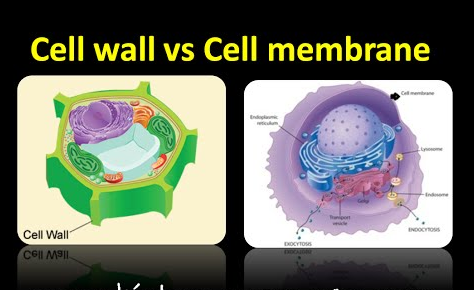What is Difference Between Cell Wall And Cell Membrane?
Difference Between Cell Wall And Cell Membrane is that The cell wall is the outermost layer of the cell. The cell wall covers the plasma membrane. The plasma membrane is also known as the cell membrane or plasmalemma. There is no other name for the cell wall. The plasma membrane is present in almost all cell types. The cell wall is present in bacteria, fungi, algae and plant cells. It is absent in the animal cell and in protozoa. The plasma membrane is a biological membrane, which is semipermeable. It allows the passage of certain substances through it.

The function of the plasma membrane is the same as that of the skin. Separate the components inside the outer cell. The plasma membrane provides support to the cell’s cytoskeleton, shapes the cell and aids in the formation of tissues by forming a matrix by joining with other cells. It allows the passage of certain substances, maintains the potential of the cell, helps in communication with other cells and intervenes in communication through molecular signals. It has protein receptors, which receive signals from other cells and the environment.
The function of the cell wall is to provide resistance and rigidity to the cell. Protects the cell against mechanical forces. The function of the cell wall varies in different cells. In the multicellular organism, it is responsible for its morphology. It prevents large molecules from entering the cell and, therefore, prevents the toxicity of the cell, while the plasma membrane prevents the entry of smaller molecules. The cell wall also helps retain cell water, so a stable osmotic environment is created in the cell.
The composition of the cell wall varies in prokaryotic and eukaryotic cells. In prokaryotes, the cell wall is formed by peptidoglycans in the inner layer and lipoproteins, lipopolysaccharides in the outer layer. In eukaryotes, the primary cell wall is formed by cellulose, the middle sheet is formed by pectins, which are polysaccharides and the secondary cell wall is formed by cellulose and lignin.
The plasma membrane is made up of proteins, carbohydrates, and lipids. There are three types of lipids: glycolipids, phospholipids, and steroids. The carbohydrate found in the cell membrane is a glycoprotein. Other sugars such as galactose and sialic acid are found. How many three types of proteins: integral proteins, lipid anchored proteins and peripheral proteins. The transmembrane protein is the other name for integral proteins.
The cell wall is elastic and controls the inflated shape of the cell. The plasma membrane is not elastic, but it is permeable. The cell wall is found in plant cells, while the plasma membrane is found in animal cells.
Summary
- The cell wall is found in the plant cell and the plasma membrane is found in animal cells.
- The plasma membrane is covered by the cell wall that forms the outermost covering.
- The cell wall is completely permeable while the plasma membrane is semipermeable.
- The cell wall is made up of cellulose and the plasma membrane is made up of lipids and proteins.
- The plasma membrane is also known as a cell membrane or plasmalemma.
You May Also Interested:
